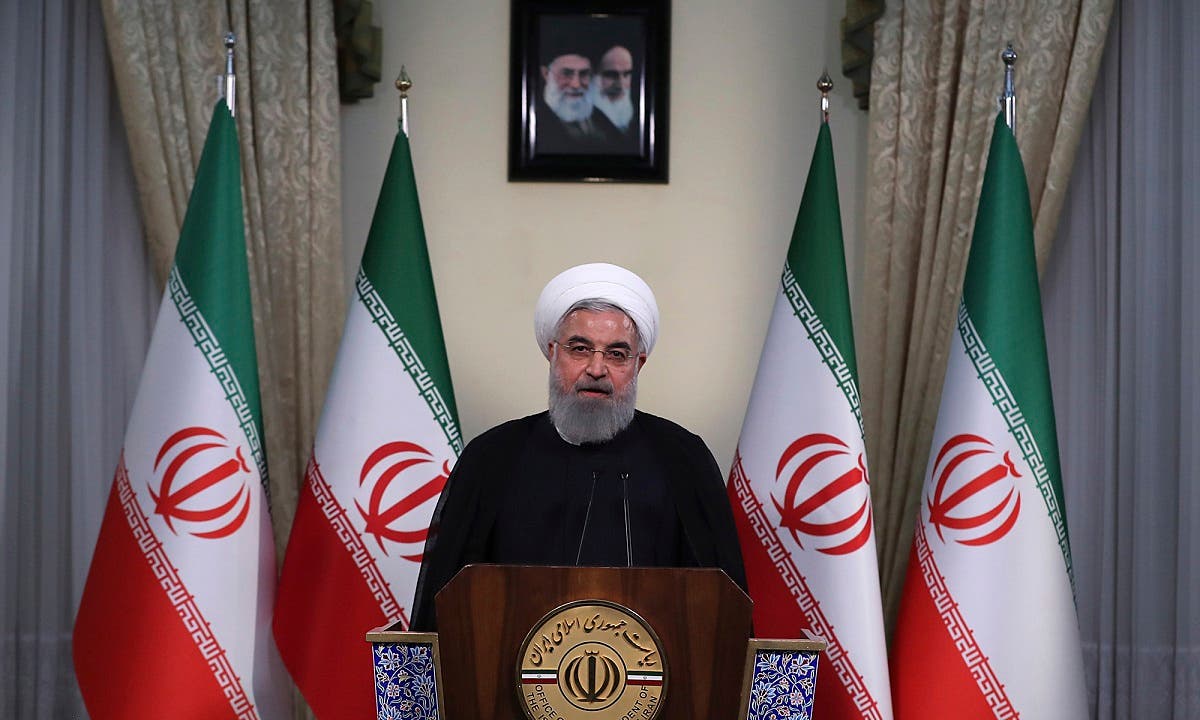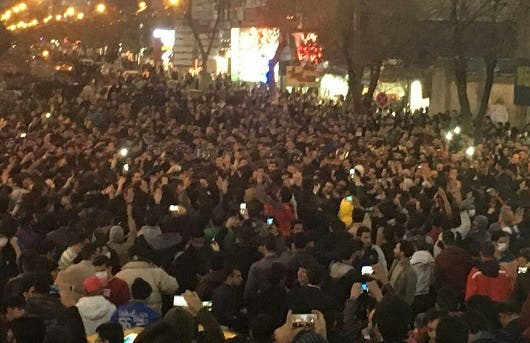Al-Arabia – The recent US withdrawal from the Iranian nuclear deal has stirred a new fierce debate between opponents and supporters of the notorious agreement. On one side, those who believe Trump’s decision was the worst possible option and, on the other, those who sustain that the Joint Comprehensive Plan of Action (JCPOA) not only did not ameliorate the economic situation of average Iranian families, but also that it emboldened the Islamic Republic of Iran to expand further its presence and influence in the neighbouring countries.
In the post-colonial history of the Middle East, never have Western powers implemented policies of appeasement and containment simultaneously as a strategy in dealing with a regime. However, under the stewardship of Barack Obama and the US liberals, JCPOA came out as the grand appeasement. The result of this misadventure was the return of billions of dollars to Iran, which enabled the Iranian Revolutionary Guard Corps (IRGC) to deploy its mercenary forces to Syria, Iraq, and Lebanon and to send weapons to Yemen. Needless to mention, the outcome was disastrous not only for Iranians but also for the people in in the wider region.
Syria expert Stephen Heydemann estimated in 2015 that Iran spends $15-20 billion per year supporting Assad, while the Foundation for Defense of Democracies calculates between $700-$800 million spent annually to support Hezbollah. Hassan Nasrallah, the current Secretary-General of the Lebanese political and paramilitary party has once said that “as long as there is money in Iran, Hezbollah has money – and we will not apologies for that”.
Iran’s bluff toward the West
Upon the signing of the JCPOA, perceived by many critics as the greatest Iranian bluff toward the West, the World Bank reported that $30 billion of Iranian frozen assets have been released. Adding to this, the $12.6billion after Geneva interim agreement and the $400 million that Obama paid to Iranian officials in cash in exchange for the release of imprisoned Americans in Iran makes a total sum of $43 Billion.
According to Mashregh News, since Rouhani took office in 2013, more than half of the factories in Iran went bankrupt or semi-bankrupt with a minimum production capacity. Some of these factories have been around for more than half a century, such as Darugar Holding Co (after 90 years); ARJ, Iran’s oldest appliance maker (81 years); Varamin Sugar Factory, Sahand Steel, Ghoo Frying Oil and Pars Electric.
Two key factors help explain the recession and the bankruptcy of so many businesses in Iran: firstly, the unmethodical policy of importation from China. According to the Iranian Customs report, the country imported $13.2 billion in Chinese goods in 2017 alone. This means a 23% increase comparing to $10.7 billion of the previous year and 88% higher than the average of the last decade. Secondly, the fact that the economy has been hard hit by the government exchange rate’s manipulation. Although Rouhani has repeatedly promised to guarantee the stability of Iranian currency, he has systematically failed to fulfil yet another of his promises.
At the begging of his term as president, one American dollar was equal to 3,180 Tomans. Following the signing of JCPOA, it raised to 3,330 Tomans and after the intervention of the government the dollar reached 6,000 Tomans. That represents a 73% increase in the exchange rate from the time the deal was signed until the days before the US decided to pull out. Rouhani’s manipulation of the exchange rate has been simply an attempt to counter the exiting of capital due to political instability as well as to artificially balance the budget deficit. . A budget that arguably could have been enough for all Iranians to share if the government was not involved in proxy wars in neighboring countries.
Apart from the recession itself, what has made the situation even harder for the Iranian people, is Rouhani’s decision to cut cash subsidies to the population by $5.3 billion, excluding 23-40 million low-income Iranians from receiving much needed financial support. At the same time, the central government has increased the budget allocated for the IRGC by 58%, from $48 Billion in 2017 to $76 billion in 2018.
Beyond the economy
One of the most important conditions when signing the nuclear deal was left completely neglected: the binding obligation for Tehran to stop committing wide spread human rights violations against its own citizens. At the time of the signing of JCPOA, Iranian human rights advocates had warned that failing to address violations would only lead to more violations. And yet, not only Rouhani has not taken a single step to address this issue, but also 14 members of his cabinet have served in the Ministry of Intelligence, an unprecedented number in Iran’s political history.
While most of the West celebrated the nuclear deal as a positive watershed in its relations with Tehran, an alarming rise in the number of arrests of environmental activists and “suicide” of detainees under the custody of Islamic Republic of Iran police all occurred during Rouhani’s presidency. Furthermore, according to Amnesty International, in 2017 “Iran executed at least 507 people, accounting for 60% of all confirmed executions in the region.”
At the same time, various sectors of the Iranian work force such as teachers and blue color workers along with the unemployed have been organizing large-scale strikes for months. A trend, in fact, that has proven to have no end near, as Kurds announced that they will return on strike after the month of Ramadan, as more and more workers from different industries are joining the mobilizations.
Notwithstanding the social upheaval in Iran and the ongoing systematic persecution of minorities in the country, the international community, as a whole, and the so-called Western liberal democracies, in particular, have decided to ignore the facts and solely blame the US for Iran’s appalling policies, both in the international sphere as a major funder of terrorism and wars, as well as domestically, as one of the countries with the worst human rights records in the world.
Against this background, it is puzzling to see iconic Western thinkers such as Noam Chomsky ignoring issues like state surveillance, public execution, stoning, mandatory Hijab, underage marriage and many other human rights violations which Iranian citizens have had to endure under the theatrical regime of Ayatollahs for the past four decades. Detached from reality and blinded by misleading ideologies, some intellectuals have even written a letter to Federica Mogherini, the High Representative of the European Union for Foreign Affairs and Security Policy, pleading her to save the nuclear deal.
How selective the 180 undersigned can be to praise the people who danced in the squares of Tehran after the singing of the deal but refuse to see thousands of Iranians today taking to streets under the slogan “bread, jobs, freedom”?
Last Update: Thursday, 24 May 2018 KSA 00:26 – GMT 21:26
 Shabtabnews In this dark night, I have lost my way – Arise from a corner, oh you the star of guidance.
Shabtabnews In this dark night, I have lost my way – Arise from a corner, oh you the star of guidance.




